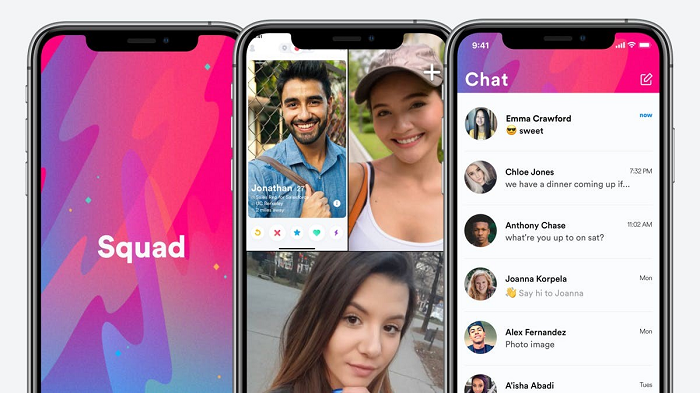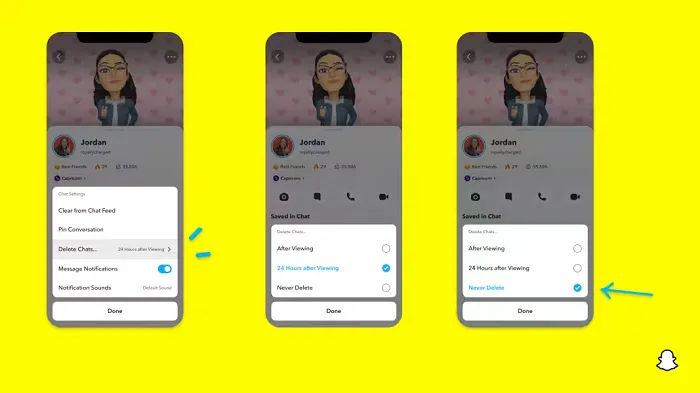SOCIAL
Twitter Confirms the Shutdown of its Separate Periscope App in March 2021

It comes as little surprise, especially given speculation about the app’s future after a discovery in Twitter’s back-end code last week. But today, Periscope has confirmed it:
Some personal news: the Periscope app will be going away next year. We’re here to say goodbye. ????
We appreciate all the support, learnings, and broadcasts from our vibrant creator community. More on our difficult decision to discontinue the app: https://t.co/jZWjDlsRHk (1/2) pic.twitter.com/Kfgvocq31O
— Periscope (@PeriscopeCo) December 15, 2020
Yes, Periscope, one of the original apps of the 2015 live-stream boom is going away. Superceded by native streaming within Twitter, and seeing declining usage, Twitter says that it can no longer justify supporting the separate app:
“The Periscope app is in an unsustainable maintenance-mode state, and has been for a while. Over the past couple of years, we’ve seen declining usage and know that the cost to support the app will only continue to go up over time.”
As a result, Periscope will go into retirement as of March 2021, while no one will be able to create a new account as of the latest app update.
“Broadcasts that were shared to Twitter will live on as replays, and all broadcasters will be able to download an archive of their Periscope broadcasts and data before the app is removed in March 2021.”
Functionally, this won’t mean a lot. As Twitter notes, users can still go live on Twitter, but they won’t have a dedicated space to store their past streams. Instead, your broadcasts will only live within the tweet, but it seems likely that Twitter will also, eventually, look to integrate live-streaming into its new Fleets option.
That scenario was given a further boost last week, when Twitter announced that it had acquired group live-streaming app Squad, which enables group chat members to share their screen during the broadcast.

The Squad app was immediately shut down after the acquisition, which likely suggests that it will re-appear soon within Twitter, and you would assume that would be within Fleets.
That could point to new opportunities for Fleets, like a new archive for your Fleets, where your live-streams would also be placed. Twitter also just signed a new hosting deal with Amazon Web Services to expand its capacity on this front, so definitely, live-streaming will remain within the Twitter app. But Periscope itself won’t be part of it.
Which, as we noted last week, is a little sad. For a short while, after the arrival of Meerkat, live-streaming was alive, it was a refreshing new spin on social media, which everyone seemed genuinely excited about. That excitement, however, didn’t last, and most of those original boom apps eventually died out, including Meerkat, Blab and several others.
Now Periscope joins them in the great app resting place in the clouds. Or the cloud, more specifically.
The announcement was widely speculated after app whispering legend Jane Manchun Wong noted a single line of code within the Twitter app last week.
This text found inside Twitter’s app indicates the shutdown notice might be shown in future versions of the Periscope app, directing users to a FAQ page about the app pic.twitter.com/gGrNNxRLL7
— Jane Manchun Wong (@wongmjane) December 11, 2020
From that text, Wong deducted that Periscope was a goner, and a week later she was (once again) proven correct. Wong’s dedication and diligence to finding such notes has seen her earn a reputation as the leading expert in reverse engineering apps, often giving us the heads up weeks, even months in advance of new features. We have repeatedly referred to Wong’s discoveries in our reporting, and this update, once again, underlines the value of her work.
So, Periscope will soon be no more – goodbye to hearts and Super Hearts and that pale blue background.

If you have any Periscope broadcasts that you want to save, you should get on it now, while you can find out more about the pending shutdown of the app here.
SOCIAL
Snapchat Explores New Messaging Retention Feature: A Game-Changer or Risky Move?

In a recent announcement, Snapchat revealed a groundbreaking update that challenges its traditional design ethos. The platform is experimenting with an option that allows users to defy the 24-hour auto-delete rule, a feature synonymous with Snapchat’s ephemeral messaging model.
The proposed change aims to introduce a “Never delete” option in messaging retention settings, aligning Snapchat more closely with conventional messaging apps. While this move may blur Snapchat’s distinctive selling point, Snap appears convinced of its necessity.
According to Snap, the decision stems from user feedback and a commitment to innovation based on user needs. The company aims to provide greater flexibility and control over conversations, catering to the preferences of its community.
Currently undergoing trials in select markets, the new feature empowers users to adjust retention settings on a conversation-by-conversation basis. Flexibility remains paramount, with participants able to modify settings within chats and receive in-chat notifications to ensure transparency.
Snapchat underscores that the default auto-delete feature will persist, reinforcing its design philosophy centered on ephemerality. However, with the app gaining traction as a primary messaging platform, the option offers users a means to preserve longer chat histories.
The update marks a pivotal moment for Snapchat, renowned for its disappearing message premise, especially popular among younger demographics. Retaining this focus has been pivotal to Snapchat’s identity, but the shift suggests a broader strategy aimed at diversifying its user base.
This strategy may appeal particularly to older demographics, potentially extending Snapchat’s relevance as users age. By emulating features of conventional messaging platforms, Snapchat seeks to enhance its appeal and broaden its reach.
Yet, the introduction of message retention poses questions about Snapchat’s uniqueness. While addressing user demands, the risk of diluting Snapchat’s distinctiveness looms large.
As Snapchat ventures into uncharted territory, the outcome of this experiment remains uncertain. Will message retention propel Snapchat to new heights, or will it compromise the platform’s uniqueness?
Only time will tell.
SOCIAL
Catering to specific audience boosts your business, says accountant turned coach

While it is tempting to try to appeal to a broad audience, the founder of alcohol-free coaching service Just the Tonic, Sandra Parker, believes the best thing you can do for your business is focus on your niche. Here’s how she did just that.
When running a business, reaching out to as many clients as possible can be tempting. But it also risks making your marketing “too generic,” warns Sandra Parker, the founder of Just The Tonic Coaching.
“From the very start of my business, I knew exactly who I could help and who I couldn’t,” Parker told My Biggest Lessons.
Parker struggled with alcohol dependence as a young professional. Today, her business targets high-achieving individuals who face challenges similar to those she had early in her career.
“I understand their frustrations, I understand their fears, and I understand their coping mechanisms and the stories they’re telling themselves,” Parker said. “Because of that, I’m able to market very effectively, to speak in a language that they understand, and am able to reach them.”Â
“I believe that it’s really important that you know exactly who your customer or your client is, and you target them, and you resist the temptation to make your marketing too generic to try and reach everyone,” she explained.
“If you speak specifically to your target clients, you will reach them, and I believe that’s the way that you’re going to be more successful.
Watch the video for more of Sandra Parker’s biggest lessons.
SOCIAL
Instagram Tests Live-Stream Games to Enhance Engagement

Instagram’s testing out some new options to help spice up your live-streams in the app, with some live broadcasters now able to select a game that they can play with viewers in-stream.
As you can see in these example screens, posted by Ahmed Ghanem, some creators now have the option to play either “This or That”, a question and answer prompt that you can share with your viewers, or “Trivia”, to generate more engagement within your IG live-streams.
That could be a simple way to spark more conversation and interaction, which could then lead into further engagement opportunities from your live audience.
Meta’s been exploring more ways to make live-streaming a bigger consideration for IG creators, with a view to live-streams potentially catching on with more users.
That includes the gradual expansion of its “Stars” live-stream donation program, giving more creators in more regions a means to accept donations from live-stream viewers, while back in December, Instagram also added some new options to make it easier to go live using third-party tools via desktop PCs.
Live streaming has been a major shift in China, where shopping live-streams, in particular, have led to massive opportunities for streaming platforms. They haven’t caught on in the same way in Western regions, but as TikTok and YouTube look to push live-stream adoption, there is still a chance that they will become a much bigger element in future.
Which is why IG is also trying to stay in touch, and add more ways for its creators to engage via streams. Live-stream games is another element within this, which could make this a better community-building, and potentially sales-driving option.
We’ve asked Instagram for more information on this test, and we’ll update this post if/when we hear back.
-

 PPC4 days ago
PPC4 days ago19 Best SEO Tools in 2024 (For Every Use Case)
-

 PPC7 days ago
PPC7 days ago4 New Google Ads Performance Max Updates: What You Need to Know
-
SEARCHENGINES6 days ago
Daily Search Forum Recap: April 16, 2024
-

 MARKETING6 days ago
MARKETING6 days agoWill Google Buy HubSpot? | Content Marketing Institute
-

 SEO6 days ago
SEO6 days agoGoogle Clarifies Vacation Rental Structured Data
-
SEARCHENGINES5 days ago
Daily Search Forum Recap: April 17, 2024
-

 MARKETING6 days ago
MARKETING6 days agoStreamlining Processes for Increased Efficiency and Results
-

 PPC7 days ago
PPC7 days agoHow to Collect & Use Customer Data the Right (& Ethical) Way



